Excavated ruins of Kawarayato kiln
Update date: June 27, 2017

Roof tiles and bricks excavated from the Kawara Yato kiln site
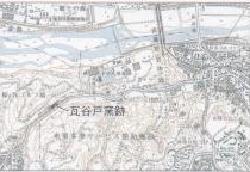
Location of Kawayato kiln site
Kawara Yato Kiln Ruins and Excavated Artifacts (Historic Site Designated by Tokyo Metropolitan Government / Tangible Cultural Property Designated by Tokyo Metropolitan Government)
Along Kawasaki Kaido, west of the Inagi City Hospital in Daimaru Kawarayato Kiln Site This site dates back to the Nara period. Musashi Kokubunji The site was known as a kiln site for firing tiles for the Musashi-Kokubunji War. The first excavation survey was conducted in 1956 by the Inagi Village. Two kiln sites were discovered during this survey, and these kilns were the source of the Musashi-Kokubunji War. Founding period and Musashino Provincial Government Related square It was discovered that the product was produced.
A second excavation survey was conducted in 1998 in conjunction with the widening of Kawasaki Kaido. This survey covered the area west of the 1956 survey area. A preliminary confirmation survey was conducted in 1997, and the main survey began on March 3, 1998. For the sake of convenience, points A, B, and C were set up from the east side, and excavations were carried out in sequence. As a result, one kiln site and one Haibara At point B, we found one kiln site, at point C, one ash field (ash field is a place where the ash that has accumulated in the kiln has been scraped out). Fire hole Ashes and discarded tiles are piled up in front of the building. concave roof tile ( Male tile ), Flat roof tile ( Female tile ), Round eaves tile ( Stirrup tile ), Eaves tile ( Ugawa ), Noshi tile , square plug, Rectangle plug, Sue ware The excavation survey ended on August 17, 1998, leaving behind many accomplishments.
Two excavated tile kilns
Kiln A, discovered at the eastern end of Site A, is mostly made of concrete. Retaining wall It has been destroyed by Fire hole and Vestibule The whole structure is unknown, but it is an underground structure. Climbing kiln It is highly likely that this is the case. A large ash field spread out to the southwest of the kiln site.
Kiln B is an underground kiln built by hollowing out the Inagi sand layer at Point B. Floors and steps It was discovered almost completely intact. Kiln body The size of the statue is about 6.5 meters in length and 1.8 meters in width. Fire hole from Chimney The height to the top is about 5.5 meters. Firing Room There were seven levels built on the roof for firing tiles, and some of the levels were reinforced with bolts to make it easier to place the products on them.
A line drawing of a horse drawn inside the kiln site
Inside Kiln B Combustion chamber Horses on the right wall Line engraving The discovery of the statue attracted attention. Three horses were carved with a rod-like object in an area of about 1 meter by 0.6 meters on the side wall. The two horses at the bottom were Saddle The horse's hoof, mane, and other features are depicted with dynamic lines, while the top horse is depicted with simple lines, in contrast to the two horses at the bottom. Rituals It is believed that the kiln was used for this purpose. Praying to the god of fire when building and firing a kiln is a custom that is still practiced today. This is the first time in Japan that a horse carving has been found inside a kiln.
A square brick engraved with the interpretation
Solution teeth Village chief Addressed to the county Petition in, square It was painted on a sen (a brick-like piece of pottery used to lay the floors of buildings, approximately 28 cm long and wide, and 8 cm thick). The 13 characters read "Kamata Village Head Respectfully Presented, Musashi Province, Ebara County" and can be deciphered as "Kamata Village Head Respectfully Presented, Musashi Province, Ebara County." Kamata Township (Currently Ota Ward area) Village chief Since then, it has governed parts of Shinagawa and Ota Wards. Ebara County Addressed to the government office of Petition At that time, when the Kokubunji Temple was constructed, the basic principle of one province, one district, one village, one household was adopted. Duty This is a valuable document that shows that the system was already in place. Solution It is believed that he practiced writing before writing " Study book "Nosen" was also discovered at the same time.
Relations with Musashi Kokubunji and Musashi Kokufu
Kawarayato Kiln Site and Musashi Kokubunji・Musashino Provincial Government The two are located close to each other, about 3.5 to 4 kilometers away in a straight line across the Tama River. Founding period It was discovered that the square-shaped ones were for the Musashi Kokufu, and the rectangular ones for the Musashi Kokubunji Temple.
References cited.
“Kawarayato kiln site excavation survey report”
“Inagi City Cultural Properties Research Bulletin No. 2, No. 3, No. 4”
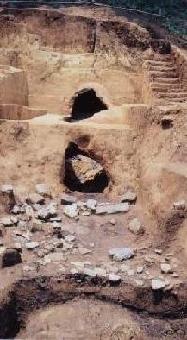
Full view of kiln B
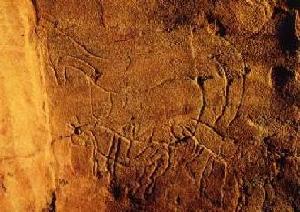
A line drawing of a horse drawn inside the kiln site
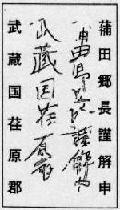
Decryption characters
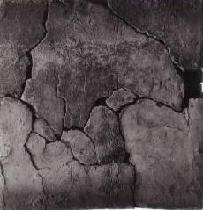
A square brick engraved with the interpretation













